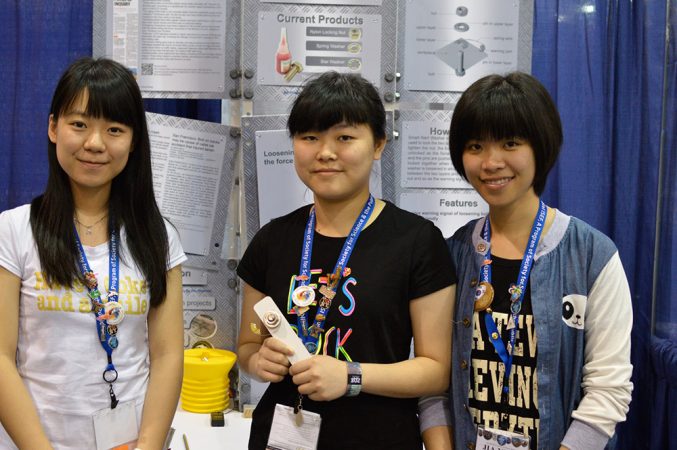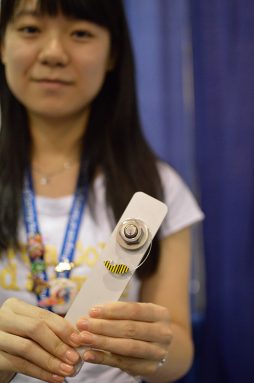Flagging loose bolts
“Smart alert washer” automatically flags when a nut is coming loose, warning of potential danger
Share this:
- Share via email (Opens in new window) Email
- Click to share on Facebook (Opens in new window) Facebook
- Click to share on X (Opens in new window) X
- Click to share on Pinterest (Opens in new window) Pinterest
- Click to share on Reddit (Opens in new window) Reddit
- Share to Google Classroom (Opens in new window) Google Classroom
- Click to print (Opens in new window) Print
By Sid Perkins

When they are new, structures such as buildings, bridges and playground equipment tend to be very sturdy. But over time, they can become wobbly and unsafe as nails, screws and other fasteners loosen. Now, a trio of student inventors from Hong Kong has designed a new type of washer. It quickly shows inspectors when the nut it lies next to on a bolt is loose.
Builders and engineers often use nuts and bolts to hold two structural pieces of material together. These could be pieces of a car chassis, a bookcase, the bridge over some river or even the timbers used in framing a house. Grooves at one end of the bolt are the same size and shape as grooves in the nut. Screwing a nut tightly onto a bolt holds the pieces together. But before builders screw the nut onto the bolt, they add a flat, ring-shaped piece of metal called a washer. That washer provides a broad flat surface that helps make a sturdy and stable connection between the pieces being attached.
But even sturdy connections can become loose, notes Mei Kam. The 18-year-old engineer attends Sheng Kung Hui Li Ping Secondary School in Hong Kong. Bolts are especially likely to loosen on structures that have moving parts, such as an escalator or a motor. Their vibrations can shake a structure enough to cause a bolt’s nut to slip slightly. The problem today, Kam notes, is that it isn’t always obvious when a nut is loose. And that can allow an unsafe situation to develop.
So Kam and classmates Jia Ying Zhong and Mei Di Zhu invented a “smart alert washer.” It literally throws up a flag when its nut and bolt begin to loosen.
Their invention consists of two attached washers, which are rings of metal with a hole in the center. One is a conventional washer. The other has a small segment cut out. That segment is colored and linked to the rest of this second washer with a spring.

When the team’s smart washer is installed, the loose segment is held in place by the nut and remains hidden. But if the nut ever becomes loose, the force of the spring overcomes the friction holding the washer segment in place. Then, the brightly colored segment pops loose. Now, at a glance, it flags the vulnerable bolt.
The team presented its design May 13 in Phoenix, Ariz., at the Intel International Science & Engineering Fair. The Society for Science & the Public, which created the fair in 1950, still runs the competition. (SSP also publishes Science News for Kids.)
The “smart alert washer” should be useful in any type of structure, the teens say. And the strength of the spring that holds the loose segment in place can be changed. That means the washer can be designed to provide an alert at any particular level of looseness. The young inventors intend to patent their design soon.
Besides being useful for structures such as bridges and buildings, the “smart alert washer” could also help prevent accidents associated with moving parts. For instance, the teens note, during the 2010 Formula One racing season, loose nuts used to bolt wheels onto the cars led to four separate accidents.
Power Words
engineer A person who is trained to use math and science to solve practical problems.
nut A fastener with a threaded hole. They typically are used along with a bolt to securely hold the surfaces of two things together.







